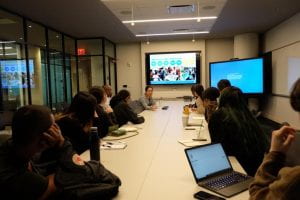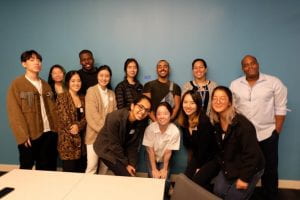As part of our studio, we visited the Capital Projects Division at the New York City Housing Authority (NYCHA), one of the first agencies in the United States to provide housing for low- and moderate-income residents throughout New York City. Housing up to 600,000 residents in its apartments, NYCHA aims to provide safe and affordable housing to its residents by increasing access to social and community services. AT NYCHA, we were privileged to speak with Delma Palma, a Community Design Architect on the work of NYCHA.
One of the key projects that Delma spoke to us was NYCHA’s new Connected Communities Initiative led by the Design Department. The initiative seeks to make big changes to better connect NYCHA residents to the public realm such that they will benefit socially, psychologically, and economically. It seeks to do so by prioritizing design excellence and community engagement, by engaging in partnerships to implement design projects and maximize funding opportunities, piloting place-making projects as well as establishing measurable links between the design of the built environment and priority areas. Activating NYCHA’s public grounds will help to connect residents to resources and opportunities beyond the borders of their developments.

The initiative advocates for participatory processes that promote transparency and inclusivity. The process follows a three-step approach starting with resident engagement followed by participatory design and finally implementation. The process seeks to empower residents to shape their communities and ensures interventions are appropriate and well supported by the community.
Another important theme that was covered is NYCHA’s Sustainability Agenda. In today’s rapidly changing climate, it is important to build more resilient measures to protect communities from heat as well as flooding. To build infrastructure resilience NYCHA has invested in rainwater retention systems, installed permeable surfaces, creating solar gardens, spearheaded urban farming initiatives as well as invested in waste management infrastructure etc. The goal is to create healthy and comfortable living environments that will withstand the effects of climate change.
The lecture made me think about what changes are needed in my own community back home and the ways in which I can contribute to building a safe, healthy and resilient living environment for all.

